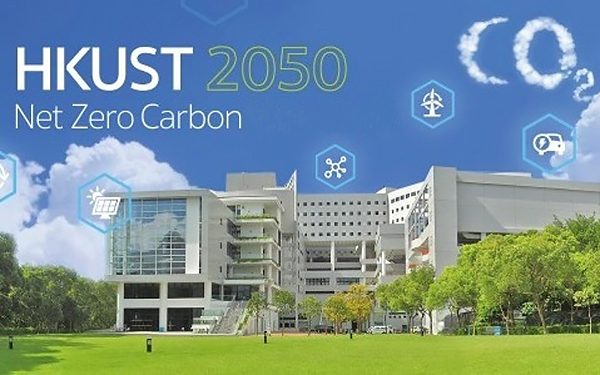Green Practices
Net-Zero Carbon 2050 and Fluorinated Gases

During last fall’s Policy Address, our Chief Executive Carrie Lam made a significant announcement: that Hong Kong would strive to reach net-carbon zero emissions by 2050. The 2050 target aligns with the findings of leading climate scientists who predict devastating climate impacts if we do not collectively reduce carbon dioxide levels to zero by the middle of this century. This is a monumental task, and requires an “all hands on deck” approach.
HKUST is committed to leading the way, both by accepting the challenge of reducing our greenhouse gas emissions to net-zero, and by engaging in the kinds of research and experimentation needed to support others to meet the same target. Over the next year the university will allocate more funds for research and development, and the Sustainable Smart Campus as a Living Lab will increasingly prioritize on-campus projects that address our net-zero carbon goals.
We all recognize that carbon dioxide is the largest greenhouse gas by volume, but did you know that some of the most powerful greenhouse gases are ones used right here on campus? Fluorinated gases are man-made substances that are used for a variety of industrial processes. Many of these gases have extremely high global warming potential (GWP), meaning that even just a little amount released into the atmosphere can have an outsized impact. Even worse, they can last in the atmosphere for hundreds or even thousands of years. One example is Sulfur Hexafluoride (SF6), which is 22,800 times more powerful than carbon dioxide in terms of climate impacts, and can last in the atmosphere for over 3,000 years.
To put this into context, the release of just 1.2 kilograms of SF6 – the amount used on campus last year – is equal to the electricity-related emissions from the IAS building for an entire month. SF6 is typically used as a “tracer” gas because it is very stable and easy to detect in measurement equipment. Unfortunately, these same attributes make it a devastatingly powerful greenhouse gas in the atmosphere.
What can we do? The first step is to identify fluorinated gases in our labs, mechanical equipment, air conditioning units, and other processes so we can keep track of them in our greenhouse gas inventory. The second, and most important, is to look aggressively for alternatives that can meet our needs without the staggering contributions to our climate footprint.
The science is clear; we cannot reach our net-carbon zero targets unless we eliminate the use of fluorinated gases.
